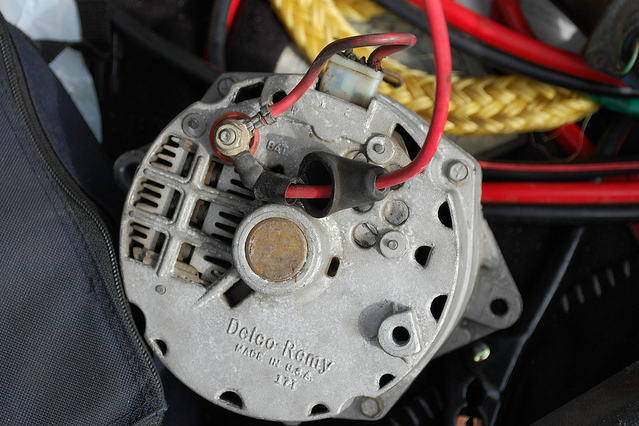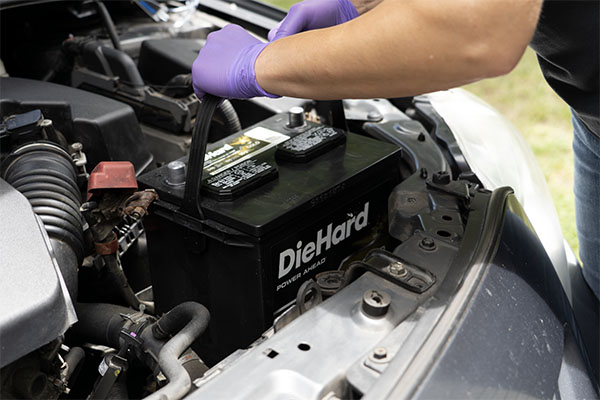An illuminated check engine light (CEL) means that there's a sensor for your engine or drivetrain that has registered a reading that's outside of normal parameters. That reading is stored in your powertrain control module (PCM) as a trouble code, illuminating the CEL. From there, it's a simple matter of connecting a code scanner to the diagnostic port under the dashboard to quickly access whatever codes are stored.
The OBD-II diagnostic protocols were adopted industry-wide in the mid-90s and provide a set of standardized trouble codes across all makes and models. Access to a trouble code gives you a huge head start in troubleshooting, but it may only tell half the story. When a problem results in a string of trouble codes (as often happens), you have to be able to "read the tea leaves" and use some deductive reasoning to get to the bottom of what's really going on.
Don't have a code scanner? Stop by your local Advance Auto Parts for a quick code check—it's just one of the free services offered.

What It Means
An internal combustion engine needs air, fuel and spark to run, and barometric pressure and air temperature both have an effect on the density and volume of air that enter the engine. The intake air temperature (IAT) sensor is what monitors the temperature of ambient air as it enters the engine. This thermistor-type sensor is calibrated for temperatures of -40 F to 240 F. When temps are low, resistance is high, resulting in a high signal voltage. In warmer weather, resistance is low and the voltage reading will be low.
Note: The PCM relies mostly on the engine coolant temperature (ECT) sensor to adjust fuel delivery and timing, but the IAT sensor is an important secondary measurement. For instance, when an IAT sensor isn't working properly and tells the PCM the air is extremely cold, fuel delivery will increase and lead to a rich running condition.
Symptoms
- Illuminated CEL
- Hard-starting condition
- Rough idle or rough running
- Rich-running condition and black smoke
- Poor fuel economy
- Limp-in mode (on some makes/models)
- Some vehicles may show little in the way of symptoms
What Happens If I Ignore It?
If your vehicle is one of the makes/models that goes into limp-in mode with a P0111 code, you'll want to get it fixed pretty soon as you'll have a top speed of about 35 mph. In other instances, you'll experience poor fuel economy and loss of power but eventually you may have to deal with a buildup of carbon in the fuel system, throttle body, EGR valve and other assemblies.
Possible Fixes
This one can be tricky to diagnose and repair, as it can be accompanied by codes related to the ECT sensor and mass air flow sensor. If left for too long, it can also cause problems in the emissions system and conceivably trigger codes related to the oxygen sensor(s) and even a misfire code.
Try checking the IAT sensor for an open circuit on the signal circuit or ground circuit. If those are both OK, you can try removing the IAT sensor and check its readings after heating and cooling it artificially, i.e. putting it in a freezer and then blasting it with a heat gun. This code can also be caused by poor connections, or corroded or damaged wiring; a "wiggle test" while watching readings from the multimeter can be a good step to rule out this problem.
Bear in mind that several trouble codes accompany the P0111 code, which can make things tricky. For instance, especially on models that have the IAT sensor mounted on the intake manifold rather than nearer the air intake, a misfire condition can register an IAT trouble code. If you have a cluster of trouble codes, it'll be a matter of process of elimination to see if it's really the IAT sensor that's at fault before you jump the gun and just replace that sensor.
It's also a good idea to clear the PCM of any trouble codes after the repair, then drive the vehicle to see if the code returns. Some makes/models require a certain number of failure cycles before the code is registered in the PCM.
Have you come across this before? Let us know in the comments.








